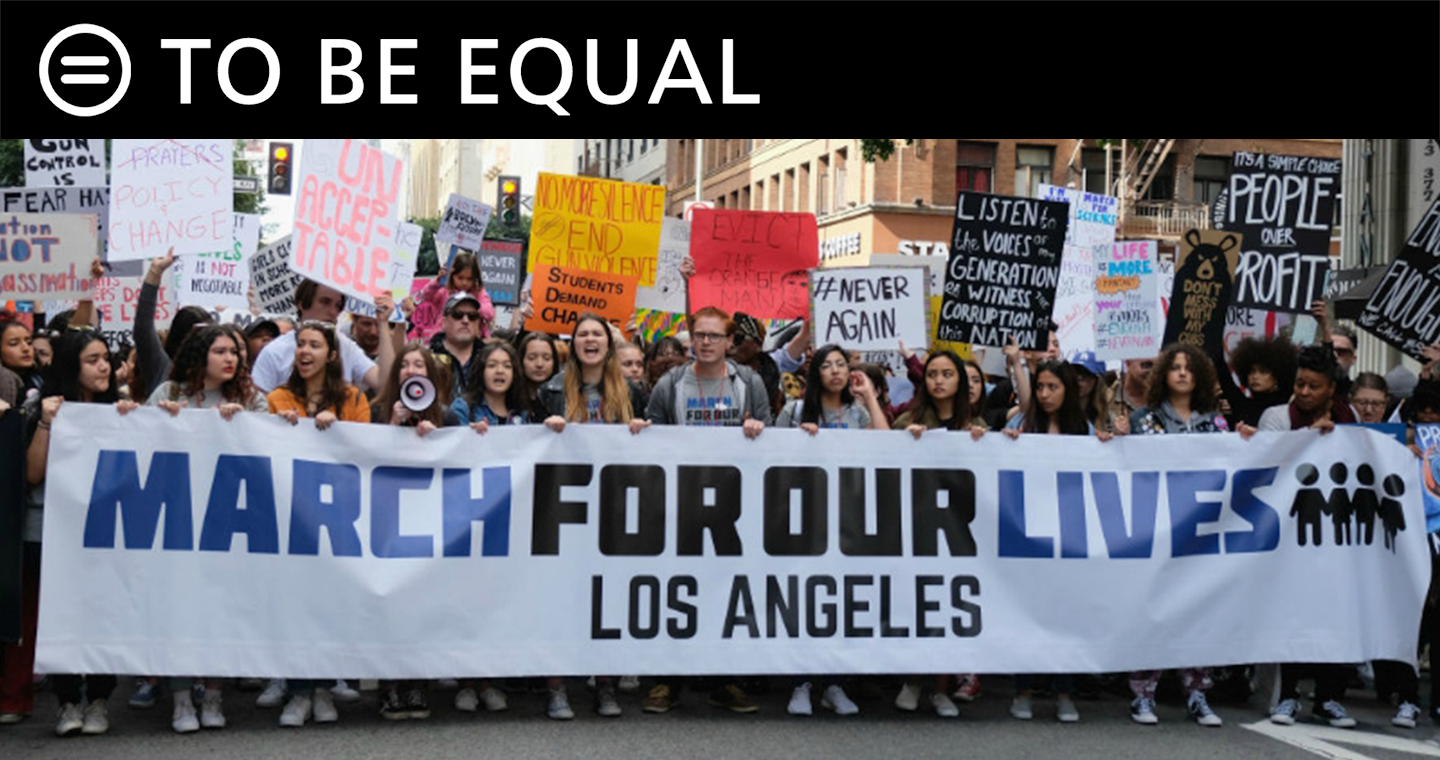March For Our Lives Follows a Venerable American Tradition of Student Social Activism [March 21, 2018]

“By our readiness to allow arms to be purchased at will and fired at whim, by allowing our movie and television screens to teach our children that the hero is one who masters the art of shooting and the technique of killing, by allowing all these developments, we have created an atmosphere in which violence and hatred have become popular pastimes.” – Martin Luther King, Jr.
When the nation’s students march to protest gun violence in their schools, they are following in a proud tradition of student leadership in social justice in America.
By early May 1963, the series of civil rights protests known as the Birmingham Campaign had been ongoing for more than a month. National attention generate by Martin Luther King, Jr.’s, arrest – which resulted in his Letter from a Birmingham Jail – had begun to fade. It was only when the children marched that America’s attention would riveted, and stay riveted.
Images of school children – mostly teenagers, but some as young as 7 or 9 – attacked by dogs and blasted with firehoses dominated the front pages of newspapers and television news broadcasts. The Children’s Crusade, as the student march was called, marked a stark turning point in Birmingham and galvanized the effort to pass the Civil Rights Act.
The Children’s Crusade is among the best-known student acts of social activism, but was by no means the first. In 1924, students at Fisk University staged walkouts to protest efforts by its white president to steer the curriculum away from liberal arts toward industrial education. In the throes of the Great Depression, the American Youth Congress formed to advocate for young people and led to the establishment of the National Youth Administration jobs program.
The student activism of the 1960s helped bring about the end of the war in Vietnam, lowered the voting age to 18, and fueled the emerging movements for women and LGBTQ people. In the 1980s students successfully pressured their universities to divest from companies profiting from apartheid in South Africa. The rise of the internet has given socially-active young people a critical organizing tool, which they’ve used to elevate hashtags like #NeverAgain, #VoteThemOut and #MarchForOurLives.
The young people of the Urban League Movement, about 700 of whom are joining the march in Washington, D.C., are marching to end not only the epidemic of mass shootings in schools, but the plague of gun violence in our communities. In 2014, the year 12-year-old Tamir Rice was killed by police while playing with a toy gun, Black people died at a rate of about 17 per 100,000 people, compared with 10 per 100,000 white people. Black men are 17 times more likely than white men to be shot and killed with guns. In 2012, the year Marissa Alexander was jailed for defending herself against her abuser, Black women were murdered at a rate two-and-a-half times higher than their white counterparts, 56 percent of them by domestic partners or boyfriends, and nearly 60 percent of them with guns.
With the committed help of our youngest Urban Leaguers, we will continue to fight for common-sense reforms like universal background checks, limits to magazine capacity and muzzle speeds, keeping guns out of the hands of domestic abusers and a strong federal gun trafficking law.
The eyes of the nation are on the March For Our Lives, and our hearts are with the hundreds of Urban League youth who are marching and fighting for their own lives, not only in Washington, but in every community in the nation.
###

